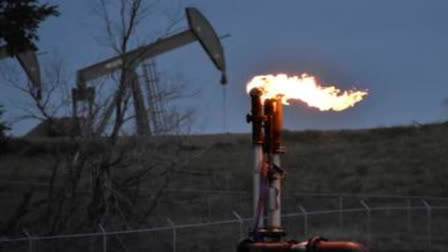Washington:The levels of the crucial heat-trapping gases in the atmosphere reached historic highs last year, growing at near-record fast paces, according to the U.S. National Oceanic and Atmospheric Administration.
Carbon dioxide, the most important and abundant of the greenhouse gases caused by humans, rose in 2023 by the third highest amount in 65 years of record keeping, NOAA announced Friday. Scientists are also worried about the rapid rise in atmospheric levels of methane, a shorter-lived but more potent heat-trapping gas. Both jumped 5.5% over the past decade.
The 2.8 parts per million increase in carbon dioxide airborne levels from January 2023 to December, wasn't as high as the jumps were in 2014 and 2015, but they were larger than every other year since 1959, when precise records started. Carbon dioxide's average level for 2023 was 419.3 parts per million, up 50% from pre-industrial times.
Last year's methane's jump of 11.1 parts per billion was lower than record annual rises from 2020 to 2022. It averaged 1922.6 parts per billion last year. It has risen 3% in just the past five years and jumped 160% from pre-industrial levels showing faster rates of increase than carbon dioxide, said Xin "Linsday" Lan, the University of Colorado and NOAA atmospheric scientist who did the calculations.
"Methane's decadal spike should terrify us," said Stanford University climate scientist Rob Jackson, who heads the Global Carbon Project that tracks worldwide emissions of carbon dioxide but wasn't part of NOAA's report. "Fossil fuel pollution is warming natural systems like wetlands and permafrost. Those ecosystems are releasing even more greenhouse gases as they heat up. We're caught between a rock and a charred place."
Methane emissions in the atmosphere come from natural wetlands, agriculture, livestock, landfills and leaks and intentional flaring of natural gas in the oil and gas industry.
Methane is responsible for about 30% of the current rise in global temperature, with carbon dioxide to blame for about twice as much, according to the International Energy Agency. Methane traps about 28 times the heat per molecule as carbon dioxide but lasts a decade or so in the atmosphere instead of centuries or thousands of years like carbon dioxide, according to the U.S. Environmental Protection Agency.
Carbon dioxide and methane levels have been higher in the far ancient past, but it was before humans existed.
The third biggest human-caused greenhouse gas, nitrous oxide, jumped 1 part per billion last year to record levels, but the increases were not as high as those in 2020 and 2021. Nitrous oxide, which lasts about a century in the atmosphere, comes from agriculture, burning of fuels, manure and industrial processes, according to the EPA.
